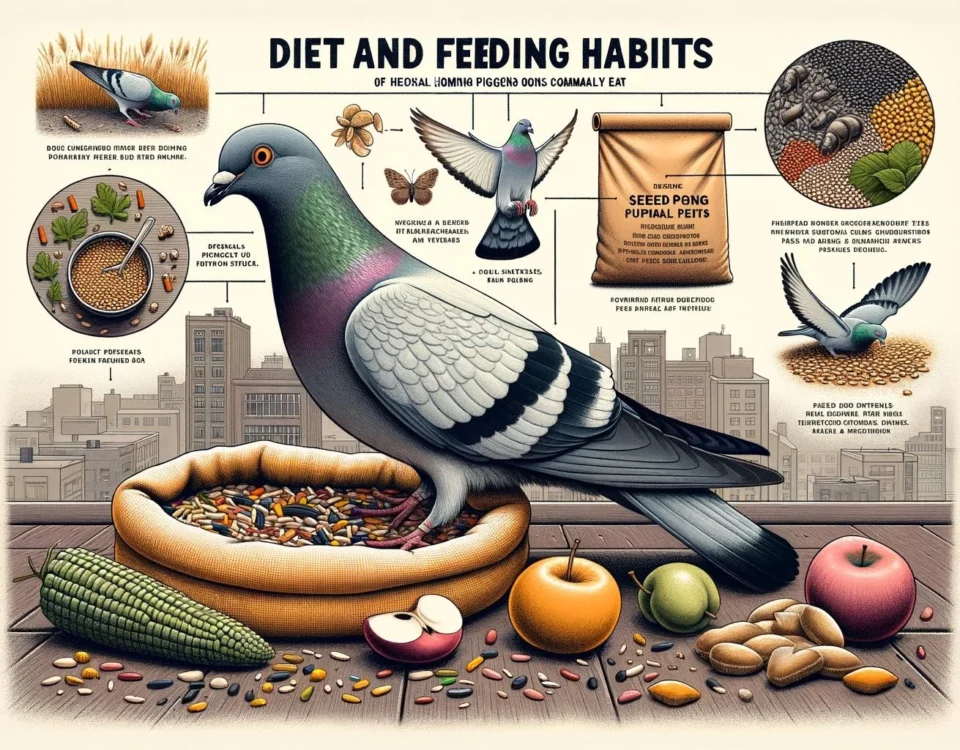Homing pigeons have long been known for their remarkable ability to navigate and find their way home from unfamiliar locations. Their inherent spatial orientation skills have captivated scientists and researchers for decades, leading to numerous studies and discoveries about how these birds navigate.
In this article, we will explore the topic of homing pigeons and their spatial orientation abilities. We will delve into the mechanisms behind their navigational skills, the factors that influence their ability to find their way home, and the role of cognitive maps and landmarks in their orientation. So let’s dive in!
Key Takeaways
- Homing pigeons possess remarkable spatial orientation skills that allow them to find their way home from unfamiliar locations.
- These birds rely on various orientation mechanisms, including sun compass, magnetic field, olfactory cues, and visual landmarks.
- Studies have shown that pigeons use cognitive maps and mental representations of their home loft, release site, and key landmarks to navigate.
Orientation Mechanisms in Homing Pigeons
Homing pigeons use a combination of orientation mechanisms to navigate their way home. These mechanisms include:
- Sun compass: Pigeons have the ability to sense the position of the sun and use it as a reference point to establish their direction. They can compensate for the sun’s movement throughout the day to maintain a consistent heading.
- Magnetic field: Pigeons are also sensitive to the Earth’s magnetic field and can use it as a navigational aid. They can detect and respond to variations in the magnetic field, allowing them to determine their heading.
- Olfactory cues: Pigeons have a keen sense of smell and can use odor cues to navigate. They can recognize familiar scents associated with their home loft and use them as a guide.
- Visual landmarks: Pigeons rely on visual cues or landmarks to navigate within their familiar home ranges. These landmarks can be natural features, such as mountains or rivers, or man-made structures, such as buildings or towers.
By combining and integrating these orientation mechanisms, homing pigeons can establish their position and direction, allowing them to find their way back home even from unfamiliar locations.
Cognitive Maps and Spatial Memory
Cognitive maps play a crucial role in the spatial orientation of homing pigeons. These maps are mental representations of the environment and the spatial relationships between different locations. Pigeons use cognitive maps to store and recall information about their home loft, release site, and key landmarks.
Research has shown that pigeons can update their cognitive maps based on their current location and integrate new information with existing knowledge. They can recognize familiar landmarks, even from novel perspectives, and adjust their flight paths accordingly.
Furthermore, studies have revealed that the hippocampus, a brain region responsible for spatial memory, plays a critical role in the navigational abilities of homing pigeons. Damage to the hippocampus impairs pigeons’ ability to navigate accurately, suggesting its involvement in mental representations of space.
Factors Affecting Homing Pigeon Orientation
Several factors can influence the spatial orientation of homing pigeons, including:
- Unilateral nostril occlusion: Studies have found that pigeons experience an asymmetry in favor of their right nostril when released with one nostril occluded. This suggests that olfactory cues play a significant role in their initial orientation from unfamiliar locations.
- Geomagnetic field: The Earth’s magnetic field provides important information for pigeons’ spatial orientation. They can detect and respond to spatial variations in the magnetic field, allowing them to navigate accurately over long distances.
- Experience and familiarity: Pigeons’ navigational abilities improve with experience and familiarity with their surroundings. Studies have shown that pigeons rely more on visual cues and landmarks when flying within their familiar home range.
Understanding these factors and how they influence the spatial orientation of homing pigeons can provide valuable insights into the mechanisms and processes underlying their navigational abilities.
Conclusion
Homing pigeons possess remarkable spatial orientation skills that have fascinated scientists for decades. By combining orientation mechanisms such as sun compass, magnetic field, olfactory cues, and visual landmarks, these birds can find their way back home from unfamiliar locations.
They rely on cognitive maps and mental representations of their environment to navigate accurately, and factors such as nostril occlusion, geomagnetic field, and experience can influence their orientation behavior. Studying homing pigeons’ navigational abilities provides valuable insights into spatial cognition and orientation mechanisms in animals.









